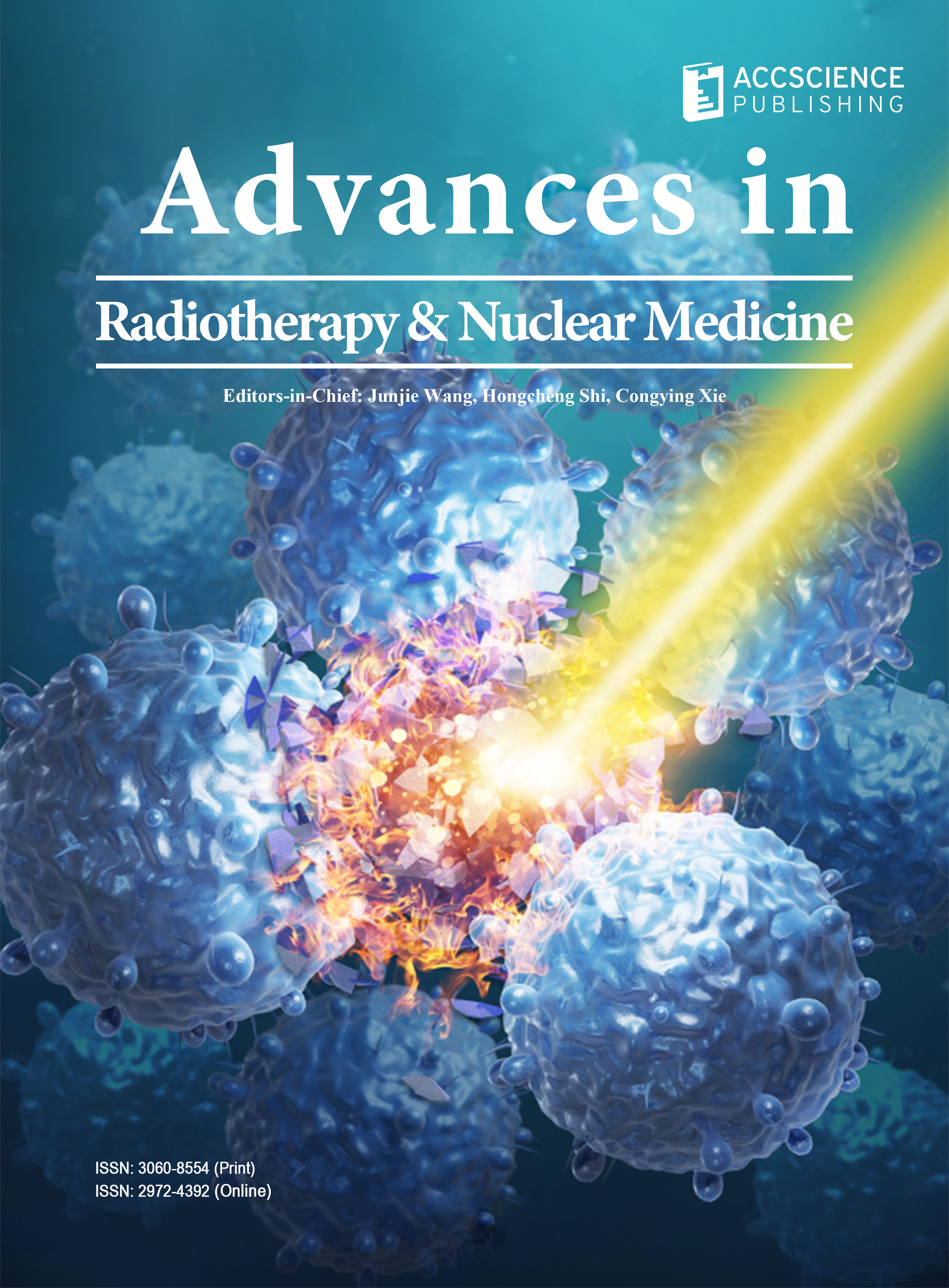Determining beta radiation doses from Y-90 microsphere for the treatment of hepatic tumors by using Monte Carlo and analytical methods

The very short range of beta radiation is a potential radiation treatment for tumor, which can preserve sensitive structures. However, due to the limited range of beta radiation, practical dosimetry of beta sources may be a point of concern, and theoretical dosimetry methods play an important role. A resin microsphere loaded with the Yttrium-90 (Y-90) radionuclide can be applied in the radioembolization of hepatic tumors. In this work, we present initial calculations of dose rates around a microsphere loaded with the Y-90 radionuclide uniformly distributed on its exterior surface. Two approaches were used to carry out the estimations: the first one by means of Monte Carlo simulations using the PENELOPE code and the second one by means of the beta-point dose function formalism. A Fortran code was developed to handle with the various quantities necessary to perform the numerical integration of the beta-point dose function. A comparison between results obtained by means of both methods indicated a maximum difference of ~5% up to the 0.3 cm distance from the center of the sphere.
- ICRU Report 72. Dosimetry of beta rays sources and low-energy photons for brachytherapy with sealed sources. J ICRU. 2004;4:2. doi: 10.1093/jicru/ndh018
- Aliseda D, Rotellar F, Sancho L, et al. Surgery and radioembolization of liver tumors. Rev Esp Med Nucl Imag Mol (Engl Ed). 2023;42(4):265-271. doi: 10.1016/j.remnie.2023.06.002
- Burrel M, Bermúdez P, Forner González A. Perspectives for yttrium-90 radioembolization as therapeutic option for hepatocellular carcinoma. Rev Esp Enferm Dig. 2022;114(4):195-197. doi: 10.17235/reed.2022.8775/2022
- Lüdemann W, Kahn J, Pustelnik D, et al. Yttrium-90 radioembolization for unresectable hepatocellular carcinoma: Predictive modeling strategies to anticipate tumor response and improve patient selection. Eur Radiol. 2022;32(7):4687-4698. doi: 10.1007/s00330-022-08585-x
- Choi JW, Kim HC. Radioembolization for hepatocellular carcinoma: What clinicians need to know. J Liver Cancer. 2022;22(1):4-13. doi: 10.17998/jlc.2022.01.16
- Oliván-Sasot P, Pérez-Enguix D, Bello-Arques P, et al. Radioembolization in patients with hepatocellular carcinoma: a series of 53 cases. Radiologia (Engl Ed). 2023;65(1):12-21. doi: 10.1016/j.rx.2020.09.012
- Lee HM, Alder L, Nguyen M, et al. Long-term outcome analysis of Y90 radioembolization in hepatocellular carcinoma. J Gastrointest Oncol. 2023;14(3):1378-1391. doi: 10.21037/jgo-22-882
- Anbari Y, Veerman FE, Keane G, et al. Current status of yttrium-90 microspheres radioembolization in primary and metastatic liver cancer. J Interv Med. 2023;6(4):153-159. doi: 10.1016/j.jimed.2023.09.001
- Yu CY, Huang PH, Tsang LL, et al. Yttrium-90 radioembolization as the major treatment of hepatocellular carcinoma. J Hepatocell Carcinoma. 2023;10:17-26. doi: 10.2147/JHC.S385478
- Yu Q, Khanjyan M, Fidelman N, Pillai A. Contemporary applications of Y90 for the treatment of hepatocellular carcinoma. Hepatol Commun. 2023;7(10):e0288. doi: 10.1097/HC9.0000000000000288
- Jiang Z, Yang F, Wang W. Applications of Yttrium-90 (90Y) in hepatocellular carcinoma. Onco Targets Ther. 2024;17: 149-157. doi: 10.2147/OTT.S445898
- Busse NC, Al-Ghazi MS, Abi-Jaoudeh N, et al. AAPM medical physics practice guideline 14.a: Yttrium-90 microsphere radioembolization. J Appl Clin Med Phys. 2024;25(2):e14157. doi: 10.1002/acm2.14157
- Weber M, Lam M, Chiesa C, et al. EANM procedure guideline for the treatment of liver cancer and liver metastases with intra-arterial radioactive compounds. Eur J Nucl Med Mol Imag. 2022;49:1682-1699. doi: 10.1007/s00259-021-05600-z
- Pasciak AS. Handbook of Radioembolization: Physics, Biology, Nuclear Medicine, and Imaging. United States: CRC PRESS; 2016. p. 330.
- Salvat F. PENELOPE-2014: A Code System for Monte Carlo Simulation of Electron and Photon Transport; 2015. Available from: https://www.oecd-nea.org/upload/docs/application/ pdf/2020-01/nsc-doc2015-3.pdf [Last accessed: June 15, 2023]
- Salvat F. The penelope code system. Specific features and recent improvements. Ann N Energy. 2013;82:98-109. doi: 10.1016/j.anucene.2014.08.007
- Loevinger R. The dosimetry of beta sources in tissue. The point-source function. Radiology. 1956;66(1):55-62. doi: 10.1148/66.1.55
- Vynckier S, Wambersie A. Dosimetry of beta sources in radiotherapy. I. The beta point source dose function. Phys Med Biol. 1982;27:1339-1347. doi: 10.1088/0031-9155/27/11/004
- Vynckier S, Wambersie A. Dosimetry of beta sources in radiotherapy: Absorbed dose distributions around plane sources. Radiat Prot Dos. 1986;14:169-173. doi: 10.1093/oxfordjournals.rpd.a079641
- Pashazadeh A, De Paiva E, Mahmoodian N, Friebe M. Calculation of beta radiation dose of a circular Y-90 skin patch: Analytical and simulation methods. Radiat Phys Chem. 2020;166:108491. doi: 10.1016/j.radphyschem.2019.108491
- De Paiva, E, Robatjazi M, Pashazadeh A. Calculations of beta radiation doses from multiwell Phosphorus-32 and Yttrium-90 applicators designed to be used in the treatment of superficial skin tumors: Comparison of Monte Carlo and analytical methods. Eur Phys J Plus. 2022;137:916. doi: 10.1140/epjp/s13360-022-03116-5
- White, DR. ICRU Report 44, Tissue substitutes in radiation dosimetry and measurement. J ICRU. 1989;23:1-189.
- Evaluated Nuclear Structure Data File. Available from: https://www.nndc.bnl.gov/ensdf [Last accessed: June 20, 2023]

